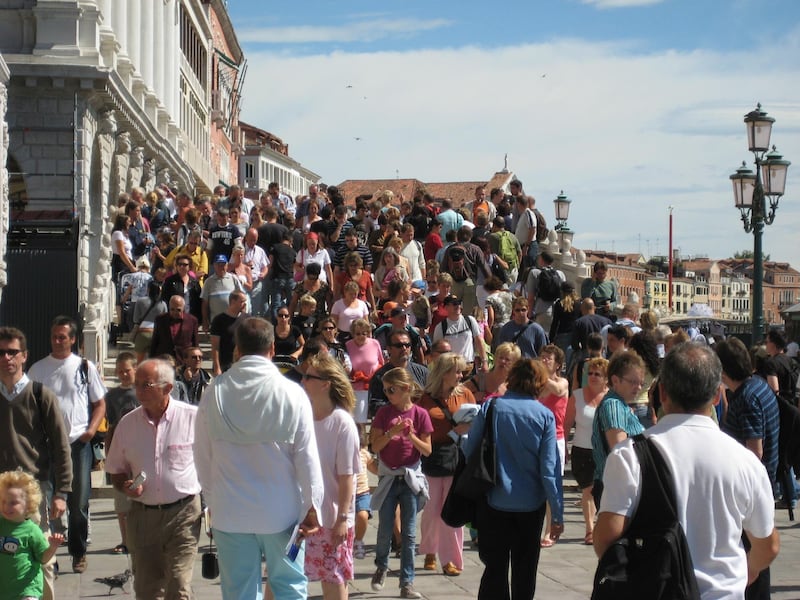There's a growing rumble of discontent when it comes to travel.
Komodo island, one of Indonesia's most popular tourist destinations and home to the world's largest living lizards, Komodo dragons, will close from January next year. The East Nusa Tenggara tourism agency, which is responsible for the Unesco World Heritage Site, confirmed the shutdown is to allow for better conservation practices for the island's wildlife. In May this year, the Louvre in Paris closed its doors for a day after workers walked out due to the crowds at the most visited museum in the world.
Meanwhile, in Croatia, Dubrovnik's role in hit HBO series Game of Thrones has backfired, with fans of the show arriving in their thousands, vastly outnumbering the native population and putting a strain on the city's historic centre. Popular culture was also to blame in Iceland, where authorities were forced to close access to one of the country's most picturesque canyons to protect it from the trampling of Justin Bieber fans intent on visiting the place where the singer shot one of his music videos.
And it gets worse. In June, groups of villagers formed a human chain to keep tourists out of Hawaii's Haena State Park on the island of Kauai, while in Nepal, overtourism reached one of its most shameful crescendos in May when more than 20 travellers died due to overcrowding at the top of Everest.
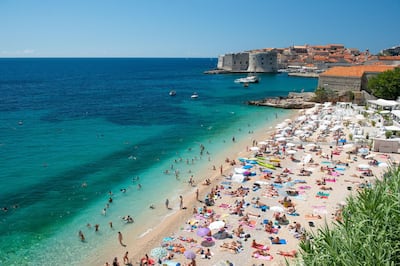
Perhaps the first sign of trouble came late last year, when "overtourism" was shortlisted as one of the Oxford Dictionary's Words of the Year. As travel becomes easier, people are doing it more than ever. The rise of low-cost airlines, cheap flights and bargain Airbnb rooms, coupled with the ever-growing presence of social media, has caused tourist numbers to skyrocket across the globe. The World Travel and Tourism Council predicts that tourism will grow by about 4 per cent per year, for the next 10 years.
For many places, that's good news. After all, tourism brings foreign capital, and creates jobs and prosperity. But for destinations already bursting at the seams, it's a disaster waiting to happen.
Coping with the influx
It explains why authorities are stepping in to take control in places struggling with the effects of overtourism. That involves balancing the benefits of tourism with the stress that a high number of visitors puts on urban systems and residents.
In Venice, city officials have introduced a visitor forecast system. The northern Italian city has a massive problem caused by the volume of day-trippers flooding in. Too many people visiting at one time, all trying to see the same sites, causes difficulties. In an effort to manage this, an online forecast system uses a sliding scale to depict how crowded the city is, from green (not crowded) to red (avoid visiting). It's designed to help tourists avoid overcrowded attractions, but can only work if people take responsibility for their travels. Tourists are being encouraged to consult Venice's Tourist Report before they visit and to "avoid days when big turnouts of tourists are foreseen".
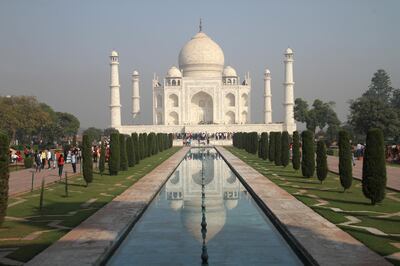
In India, authorities decided to take that responsibility out of travellers' hands. The country recorded more than 10 million foreign tourists in 2017, compared to 8.89 million in 2016. India's most visited landmark, the Taj Mahal, is struggling with the influx. Travellers visiting Agra's famous mausoleum will now be fined for overstaying their welcome, with tourists to be charged at exit gates if their visit lasts more than three hours.
However, it's not simply the volume of visitors that causes problems for destinations. Another issue that stems from overtourism is antisocial behaviour, something that Amsterdam has been busy battling against. Groups of men on stag dos are often the cause of this problem, which encompasses offences such as loud noise disturbances, disorderly behaviour and even urinating in public.
"Liveability is one of the issues," says Janine Fluyt, a spokeswoman for Amsterdam & Partners, a non-profit organisation dedicated to making the Dutch capital both a nice place to live and visit. "In a first move to tackle nuisances caused by overcrowding and irresponsible behaviour, our Enjoy and Respect campaign focuses on raising awareness and influencing traveller conduct. This is in co-operation with the City of Amsterdam, the police, transport providers and partners in the leisure sector."
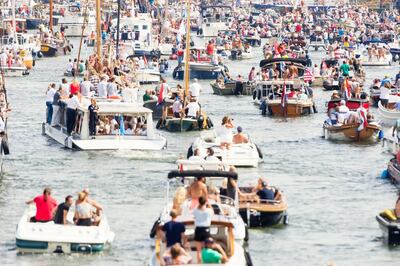
In some of Amsterdam's worst affected areas, such as De Wallen, overtourism combined with irresponsible behaviour is a serious problem. "Along with the nuisance comes the pollution of the streets," explains Fluyt. "At this moment there are too many people at certain times in certain places."
While the majority of those living in the Dutch capital recognise that tourists are part of the city's fabric, a growing number of people are beginning to speak out. "Many residents believe that it is a crowded city and that the fuss that comes with the tourists is simply a part of Amsterdam," says Fluyt. "In contrast, of course there are a lot of people who are complaining."
Travel deeper
That discontent has prompted the city to work on creative solutions. As well as introducing pedestrian areas and restrictions on cars, Fluyt says Amsterdam & Partners is keen to provide information to visitors to usher them to lesser-known parts of the city, and beyond.
Getting visitors to secondary cities, or other places around crowded destinations, is an important strategy when it comes to managing overtourism. "Promoting a neighbourhood campaign that presents unknown places in well-known areas and little-known neighbourhoods is key," says Fluyt. The city's "visit Amsterdam, see Holland" slogan also encourages repeat visitors to leave Amsterdam altogether and travel to Dutch cities such as The Hague, Rotterdam and Leiden.
A similar problem exists in Thailand. In Bangkok – the most visited city in the world, according to last year's MasterCard Global Destination Cities Index – bottleneck metro stations and fully booked hotels are the result of more than 20 million international visitors per year. In 2018, Thai authorities closed Maya Bay, a site made famous in 2000 by the Hollywood movie The Beach, which stars Leonardo DiCaprio, while northern city Chiang Mai is also struggling to cope with the heavy influx of visitors. Conversely, rural regions such as Mae Hong Song near the border with Myanmar suffer from low tourist rates, contributing to a weakened economy.
Mountain highs come with hidden lows
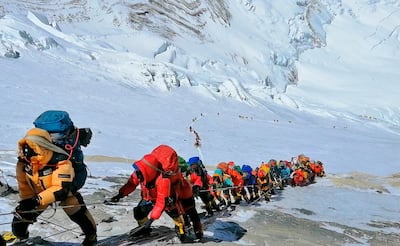
In Nepal, overtourism has become a matter of life and death. Many travellers visit the Himalayan country for its mountains, pushing resources, facilities and space to the limit. This year was one of the deadliest seasons on Everest to date, and authorities are facing criticism for their role in the situation.
Rabindra Maharjan, a team leader at trekking operator Experience Outdoors Nepal, says he believes overtourism on the mountain is due to a lack of restrictions on climbing permits and lax regulations on tour operators. "The number of climbers on the Chinese side of Everest has not increased because permit numbers and operators are limited there," explains Maharjan. "Meanwhile, in Nepal, numbers have increased significantly, and we see new records every season.
“At Experience Outdoors Nepal, our solution is to keep team sizes small. This is something that happens almost automatically when you have strict requirements for your climbing members, but sadly it’s not something that every trekking company has.”
Although Maharjan acknowledges permit numbers need to be restricted, he is doubtful this will happen. "I don't think the government will restrict permits in Nepal any time soon, but I do think it will become necessary, like it became necessary on other mountains such as Denali, Mont Blanc, etc.
"Stricter requirements for operators on how to run an expedition, and how to choose and accept their climbing members is also needed."
Sudeep Kandel, co-founder of adventure consulting business Himalayan Adventure Labs, agrees. "Everest has yet again caused controversy," he says. "Concrete steps from the Nepali government need to be taken."
Kandel suggests a possible solution could be to introduce a rule dictating that all trekkers need to have climbed at least one 7,000er (a mountain more than 7,000 metres tall) before attempting to climb Everest. "This would not only decrease the number of inexperienced climbers on the world's highest mountain, it would also open up other mountains in the region and could have a positive impact in these communities," he adds.
Travelling smart
Once again, the problem is not fundamentally with tourists, but traveller management. But visitors can still be part of the solution. Instead of booking trips to the world's "must-visit" cities and travelling with hopes of recreating the most liked pictures on Instagram, tourists should take it upon themselves to visit less frequented cities and remote destinations. Travelling during the off-season to help reduce crowding in cities is another way to decrease the negative impact of your trip.
Travelling, experiencing new cultures, visiting unknown places and wandering far from home can bring a sense of joy in a way that not many other things can. But it also ultimately brings you closer to where someone else lives and works. And that's something that everyone, as responsible travellers, should always be conscious of.
